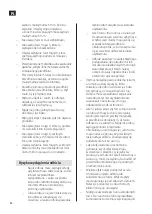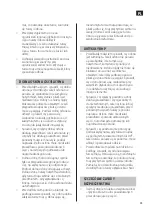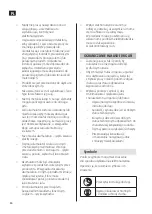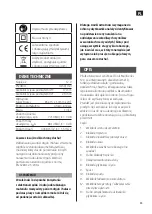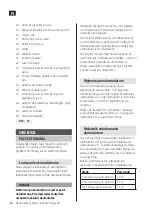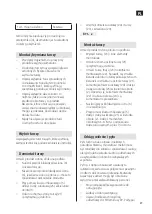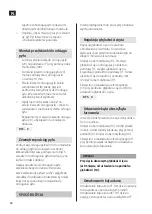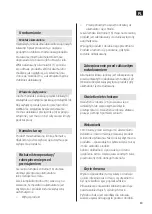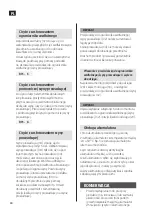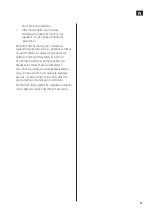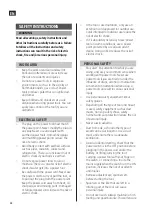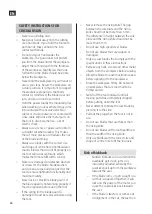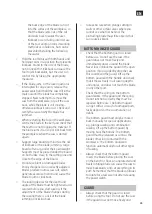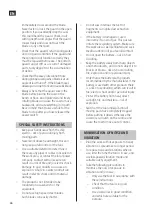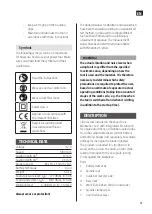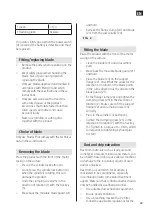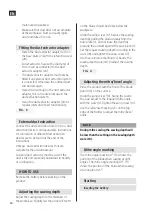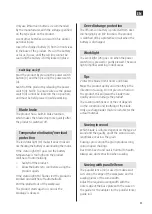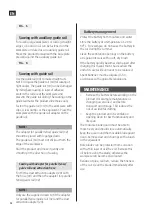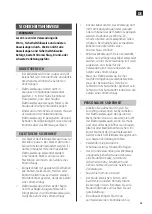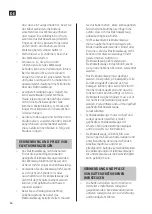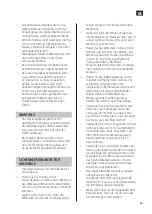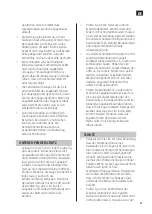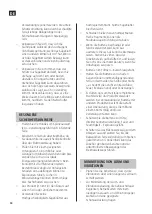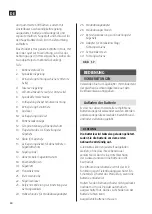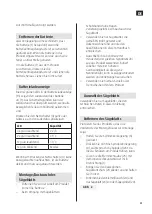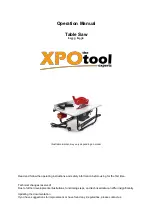
EN
46
immediately closes around the blade.
Never fasten or lock the guard in the open
position. If you accidently drop the saw
this could bend the guard. Check in all
cutting depths and angles that the guard
moves freely and does not touch the
blade or any other part.
• Check that the guard's return spring works
and is in good condition. If the guard and
the spring do not function correctly they
must be repaired before use. The bottom
guard can get stiff as a result of damaged
parts, tacky deposits or the accumulation
of debris.
• Check that the base plate cannot move
during plunge sawing when blade is at an
angle of less than 90°. If the blade moves
sideways it can get stuck and cause kickback.
• Always check that the guard covers the
blade before placing the saw on the
bench or floor. An unprotected and freely
rotating blade can cause the saw to move
backwards, and cut everything in its path.
Bear in mind that it takes a while for the
blade to stop after you have released the
power switch.
SPECIAL SAFETY INSTRUCTIONS
• Keep your hands away from the chip
ejector – risk of personal injury from
moving parts.
• Never work above head height, this will
not give you full control of the tool.
• Use a suitable detector to determine if
there are any pipes or cables concealed in
the work area, or contact the local power
company. Contact with a live wire can
result in a risk of fire and/or electric shock.
Damage to gas conduits can cause an
explosion. A hole in a water conduit can
result in electric shock and/or material
damage.
• The product is not intended to be
mounted on a saw bench or the
equivalent.
• Do not use high-speed steel blades.
Such blades can easily shatter.
• Do not saw in ferrous metal. Hot
fragments can ignite dust extraction
equipment..
• If the battery is damaged or used
incorrectly it can emit gas. This gas can
irritate the respiratory system. Make sure
the work area is well ventilated and seek
medical attention if you feel discomfort.
• Do not open the battery – risk of short
circuiting.
• Keep the battery away from sharp objects
and metal objects, and do not subject it to
knocks or blows – risk of short-circuiting,
fire, explosion and/or personal injury.
• Only charge the battery with products
recommended by the manufacturer. If the
battery is used with other products there
is a risk of overloading, which can result in
fire, electric shock and/or personal injury.
• Protect the battery from heat, direct
sunlight, fire and moisture – risk of
explosion.
• Switch off the tool and wait until all
moving parts have completely stopped
before putting it down. Otherwise the
accessory can catch on the surface and
cause the tool to move out of control.
MINIMISATION OF NOISE AND
VIBRATION
• Plan the work so that exposure to heavy
vibrations is spread over a longer period.
• To reduce noise and vibrations when in
use, limit the time the tool is in use, and
use low-power/vibration mode and
suitable safety equipment.
• Take the following precautions to
minimise the risks of exposure to
vibrations and/or noise:
– Only use the tool in accordance with
these instructions.
– Check that the tool is in good
condition.
– Use accessories in good condition,
and which are suitable for the
purpose.

